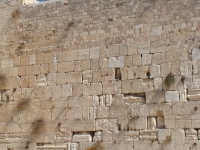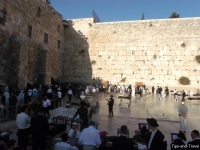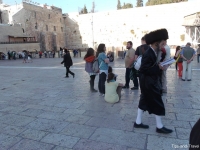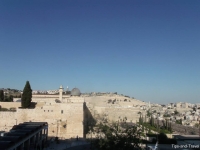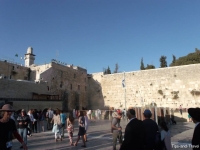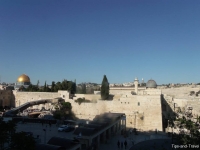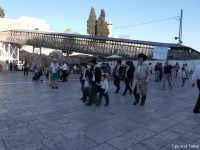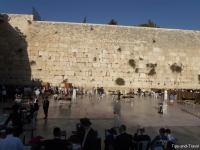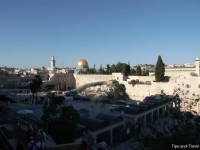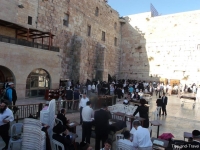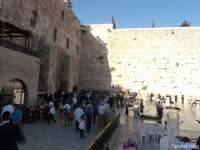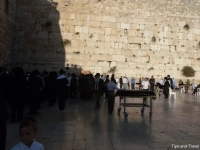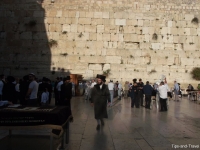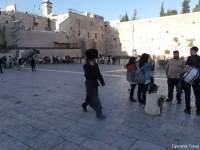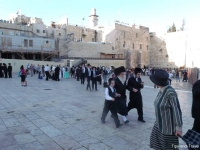The Wailing Wall, or Western Wall or HaKotel and El-Burak, is a retaining wall of the Temple Mount in Jerusalem located in the Jewish quarter of the old city dating from I century BC and since the seventh century, it incorporates the walls of the Temple Mount, very close to the Holy of Holies (located on the Temple Mount) so that the Jews consider the holiest place for prayer. The pan (57 m long) is just a part of the western wall (497 m long). The rest of the wall is used as a fourth wall by the adjoining houses in the Arab neighborhood; the rest is underground. The Wailing Wall is an Israeli national symbol as well as a Muslim one because it supports the esplanade where are built the Dome of the Rock and Al-Aqsa Mosque (the third holiest place in Islam). You enter the square in front of the wall with a door wall, the door Mughrabi or Garbage, where police has strict controls. The esplanade has 3 parts; one that is open to the public, the other two, separated by a partition, are for people who want to approach the wall, one for men and one for women. There are holy arches in underground rooms that line the men’s section where we find the Torah scrolls that are used during prayer services that take place throughout the day.
Tips
If you want to approach the wall, or put small pieces of paper with wishes or prayers in the cracks and crevices, either to pray or put your hand on the wall, you must enter the section that suits you by walking on your front to the wall and to leave the place, walking slowly backwards because you can not give your back to the wall.
mur
